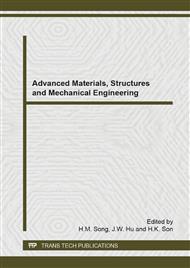p.3
p.7
p.13
p.17
p.24
p.32
p.37
p.42
Screening for Welding Defects Using Acoustic Emission Technique
Abstract:
– Welding defects can create a major threat in industrial equipments and pressure vessels can during operation. Detecting and identifying of existing welding defects has a great role in the assessment of the probability of failure in different situations. Acoustic emission (AE) is only a nondestructive technique that can be used as in-service testing and used on large structures. This paper examines the changes in the properties of AE source generated from Pencil Lead Break (PLB). AE is recorded across different seam welds with pre-identified welding defects. Series of experiments are carried out on three certified standard Carbon Steel plates. Each plate has different pre-identified defect such as lack of fusion, porosity and slag. Different AE parameters such Energy, Amplitude and number of counts have been used to identify quantitatively the type of defects. The results are showing that AE technique is capable to identifying the different defects types which can be upgraded for higher productivity and accuracy for welding inspection.
Info:
Periodical:
Pages:
7-12
Citation:
Online since:
September 2014
Authors:
Keywords:
Price:
Сopyright:
© 2014 Trans Tech Publications Ltd. All Rights Reserved
Share:
Citation:


